I remember the first time I had to buy a laptop for myself. The sheer volume of choices—the alphabet soup of CPUs, the confusing storage options, the battle between operating systems—it felt like trying to read a foreign language. If you’re a beginner venturing into the world of personal computing, I want you to know that that feeling of overwhelm is completely normal.
The good news is that technology has advanced so much that you no longer need to spend a fortune to get a fantastic, reliable machine. My goal in this comprehensive guide is to cut through the jargon and empower you to make an informed decision. We’re going to focus on finding the best laptop for beginners—a machine that is affordable, easy to use, reliable, and perfectly suited for common tasks like email, document creation, streaming, and, crucially, being the best laptop for web browsing.
Forget the high-end gaming rigs and professional workstations for now. We are focusing on foundational excellence. Let’s dive in and find the perfect entry-level laptop for you!
Contents
- 1 Why Choosing the Right Beginner Laptop Matters
- 2 Core Specifications: What Truly Counts for a Beginner Laptop?
- 3 Operating Systems: Which Platform is Best for Beginners?
- 4 Deep Dive: The Best Laptop for Web Browsing and Everyday Tasks
- 5 Top Recommendations: The Best Laptop for Beginners Categories
- 6 Setting Up Your New Laptop: Essential First Steps
- 7 Common Mistakes Beginners Make (And How to Avoid Them)
- 8 Conclusion: Starting Your Digital Journey Successfully
Why Choosing the Right Beginner Laptop Matters
When you’re just starting out, your needs are typically centered around simplicity and stability. Unlike a professional content creator who needs raw power, you need a streamlined experience that doesn’t frustrate you with slow loading times or complicated interfaces.
Choosing the right laptop for beginners isn’t just about saving money; it’s about optimizing your learning experience. A machine that is too complex, too slow, or too heavy will quickly become a deterrent rather than an asset.

Avoiding the Overkill Trap
One of the most common pitfalls I see beginners fall into is buying too much machine. They hear terms like “i9 processor” or “32GB RAM” and assume bigger numbers mean better value, regardless of their actual use case.
If your primary activities are going to be checking Gmail, writing essays in Google Docs, watching Netflix, and general web browsing, you simply do not need a machine built for rendering 4K video. Overkill means spending hundreds of dollars on components you will never utilize. We want efficiency and longevity, not unnecessary horsepower.
The Importance of User Experience (UX)
For a beginner, the operating system (OS) and the overall usability of the hardware are paramount. A great user experience means:
- Simplicity: The interface should be intuitive and easy to navigate.
- Reliability: The laptop should start quickly and not crash during important tasks.
- Comfort: The keyboard and trackpad must feel good to use for extended periods.
Ultimately, the best laptop for beginners is the one that gets out of your way and allows you to focus on learning and completing your tasks without technological headaches.
Core Specifications: What Truly Counts for a Beginner Laptop?
Now, let’s tackle the technical specs. Don’t worry; I’m going to translate the confusing tech terms into plain English so you know exactly where your money is best spent when evaluating a new laptop for beginners.
CPU (The Brain): Balancing Power and Price
The Central Processing Unit (CPU) is the brain of your computer. It dictates how fast applications open and how smoothly you can multitask.
For beginners, you are generally looking for efficiency and low power consumption rather than peak performance.
- Minimum Requirement: Intel Core i3 (11th gen or newer), AMD Ryzen 3, or comparable efficiency chips like the Apple M1/M2.
- The Sweet Spot: Intel Core i5 or AMD Ryzen 5. These provide substantial speed for seamless multitasking (like having Spotify, 15 browser tabs, and a Word document open simultaneously) without breaking the bank.
- Chromebooks: Look for newer Intel Celeron or Pentium processors, or AMD A-series chips, specifically designed for the lightweight ChromeOS. Avoid older, very slow chips if you want a reliable best laptop for web browsing experience.
RAM (The Multitasker): How Much Memory Do You Need?
RAM (Random Access Memory) is the computer’s short-term memory. It holds the data for the applications you are actively using. If you don’t have enough RAM, your computer will slow down dramatically when you switch between tasks.
- Absolute Minimum (Avoid if possible): 4GB. This is only suitable for very basic, single-tasking machines like budget Chromebooks, and even then, I find it limiting.
- Recommended Baseline: 8GB. This is the gold standard for any modern laptop for beginners. 8GB allows you to handle general web browsing (with many tabs open), light photo viewing, streaming, and all typical school or office work smoothly.
- Optimal for Longevity: 16GB. While perhaps overkill for the absolute beginner, 16GB ensures the machine remains fast and capable for many years, even as software demands increase.
Storage (The Vault): SSD vs. HDD for Speed
Storage is where your files, programs, and operating system live permanently.
| Type | Pros | Cons | Recommendation for Beginners |
|---|---|---|---|
| HDD (Hard Disk Drive) | Very cheap for large capacity. | Slow startup, prone to failure, bulky. | AVOID. HDDs are the number one cause of frustration and slow speed in budget laptops. |
| SSD (Solid State Drive) | Lightning fast startup, durable, silent. | More expensive per gigabyte. | MANDATORY. An SSD is non-negotiable for the best laptop for beginners. |
Storage Capacity Recommendations:
- Minimum: 256GB SSD. This is enough if you rely heavily on cloud storage (Google Drive, OneDrive, Dropbox).
- Recommended: 512GB SSD. This offers excellent flexibility for storing documents, photos, and a few larger applications without constantly worrying about space.
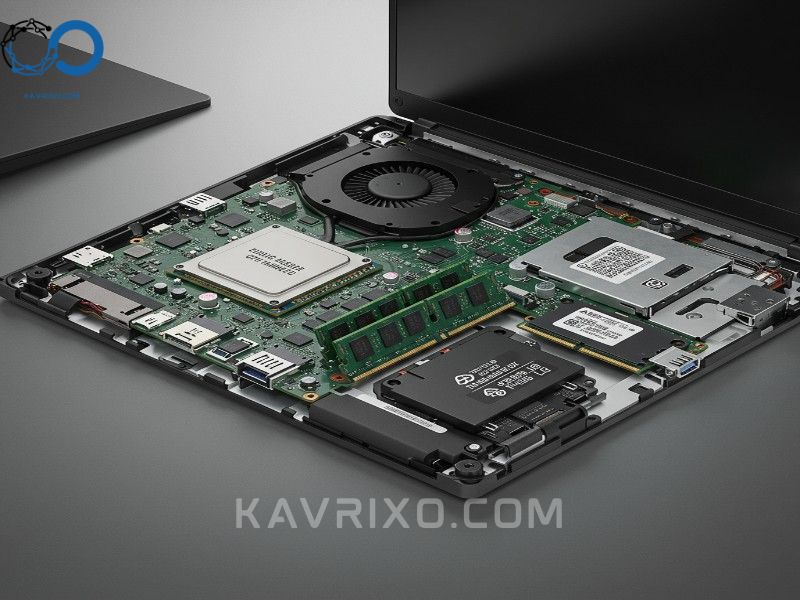
Display Quality: Protecting Your Eyes
Since you’ll be staring at this screen for hours, display quality is incredibly important for comfort and eye health.
- Resolution: Aim for 1080p (Full HD or 1920×1080). Anything less will look pixelated and cramped.
- Panel Type: Look for IPS (In-Plane Switching) panels. They offer much better viewing angles and color accuracy than older TN panels, making it easier to watch videos and share the screen.
- Size: 13-inch to 14-inch offers the best balance of screen real estate and portability. If the laptop will rarely leave the desk, a 15-inch model might be more comfortable.
Battery Life and Portability: Freedom to Learn
A laptop’s main advantage is its portability. You shouldn’t be tethered to a wall socket.
- Battery Life: Aim for 8 hours of real-world use (not just the manufacturer’s claim). This is crucial if you plan to take your laptop for beginners to a coffee shop, library, or classroom.
- Weight: Keep it under 4 pounds (1.8 kg). Lighter machines (especially 13-inch models) are far easier to carry in a backpack every day.
Operating Systems: Which Platform is Best for Beginners?
The operating system (OS) determines the look, feel, security, and application availability of your laptop. Choosing the right OS is often the most personal part of selecting the best laptop for beginners.
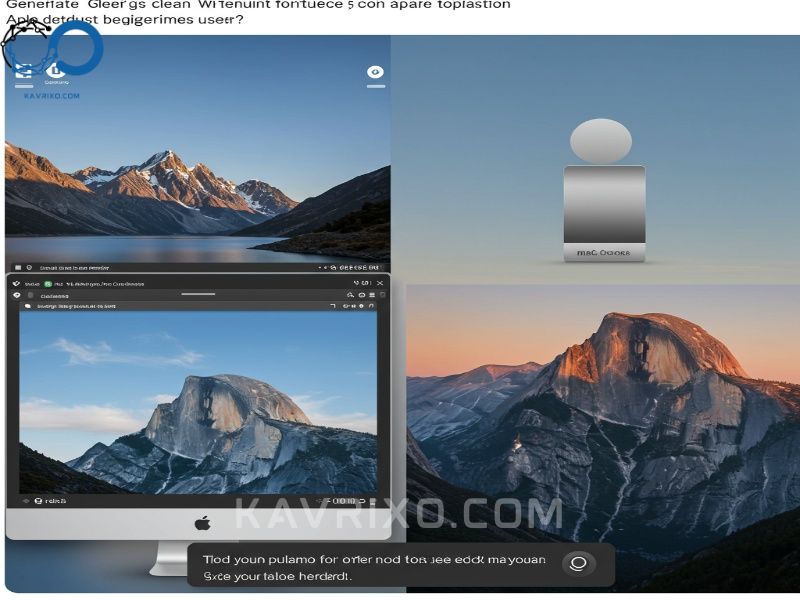
Windows (The Universal Choice)
Windows is the most common operating system globally, giving you the widest variety of hardware choices and price points.
- Pros: Maximum compatibility with peripherals (printers, external hard drives), huge software library, and endless customization options. You can find Windows machines at every single budget level.
- Cons: Can be more susceptible to viruses and malware than macOS or ChromeOS, and the interface can sometimes feel cluttered to a true novice.
- Best For: Users who need specific, traditional software (like advanced Excel or niche school programs), or those who want maximum hardware flexibility.
macOS (The Premium Experience)
Apple’s macOS runs exclusively on MacBooks. They are known for their exceptional build quality, streamlined performance (especially with the Apple Silicon chips), and integrated ecosystem.
- Pros: Extremely intuitive interface, excellent security, phenomenal battery life, and superior optimization. MacBooks are often cited as incredibly reliable and easy to maintain, making them a strong contender for the best laptop for beginners if the budget allows.
- Cons: Higher initial cost, fewer hardware choices, and limited touch screen options (which Windows and ChromeOS often offer).
- Best For: Beginners looking for a premium, hassle-free experience who value longevity and simplicity above all else.
ChromeOS (The Simplicity Champion)
ChromeOS, found on Chromebooks, is essentially a web browser powering an operating system. It is lightweight, fast, and relies almost entirely on internet connectivity and cloud applications (like Google Workspace).
- Pros: Extremely fast boot times, exceptional security (less prone to traditional viruses), very simple interface, and generally the lowest price point. It excels as the best laptop for web browsing and basic document editing.
- Cons: Limited offline functionality, cannot run traditional Windows or macOS software (like Photoshop or complex coding applications). Storage is usually minimal.
- Best For: Users whose needs are strictly confined to web browsing, email, streaming, and using cloud-based productivity suites. Perfect for young students or seniors.
Deep Dive: The Best Laptop for Web Browsing and Everyday Tasks
Since the vast majority of beginner activity revolves around the internet, let’s focus specifically on what makes a machine the best laptop for web browsing.
A great web browsing experience isn’t defined by the fastest CPU; it’s defined by quick loading times, seamless video streaming, and the ability to hold multiple tabs without stuttering.
Essential Features for Streaming and Browsing
- Wi-Fi Standard: Ensure your potential laptop supports Wi-Fi 6 (802.11ax) or at least Wi-Fi 5 (802.11ac). Wi-Fi 6 offers faster speeds and better handling of network congestion, which translates directly to smoother streaming (Netflix, YouTube) and quicker page loads.
- Good Speakers: If you plan on watching movies or attending online classes, look for laptops with front-facing or upward-firing speakers, often branded as having decent audio or even Dolby certification. Poor speakers can ruin the streaming experience.
- Webcam Quality: For video calls (Zoom, Teams), prioritize a 720p or 1080p webcam. Many older budget laptops still use terrible, grainy webcams. A good camera is essential for connection in today’s digital world.
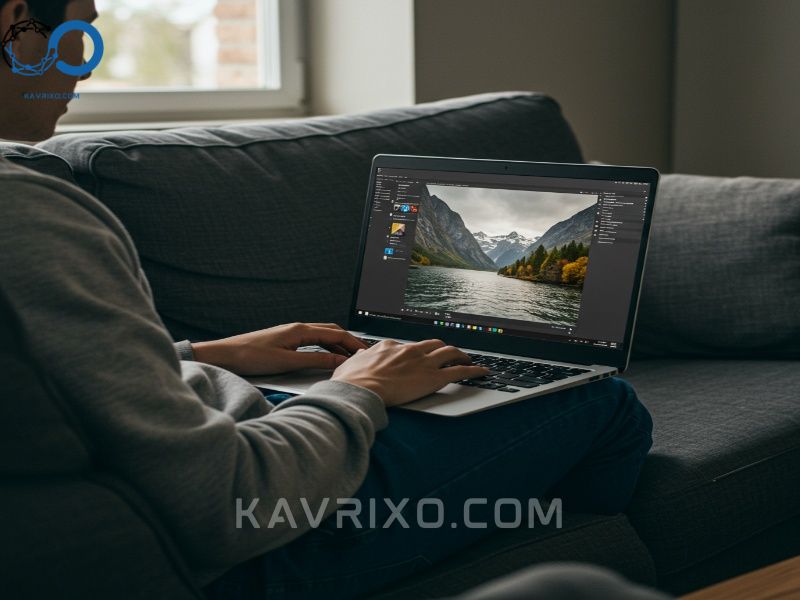
Connectivity: Wi-Fi 6 and Beyond
Beyond the wireless connection, consider physical ports. While USB-C (Thunderbolt) is becoming the standard, beginners often benefit from legacy ports.
- USB-A Ports: Make sure it has at least one standard rectangular USB-A port for connecting older flash drives, mice, and keyboards without needing an adapter.
- HDMI: An HDMI port is incredibly useful for easily connecting your laptop to a TV or an external monitor for a larger workspace.
- SD Card Reader: If you have a digital camera and want to easily upload photos, an integrated SD card reader is a huge convenience.
Top Recommendations: The Best Laptop for Beginners Categories
Based on years of experience recommending entry-level hardware, I’ve broken down the best laptop for beginners into three key categories based on budget and usage needs.
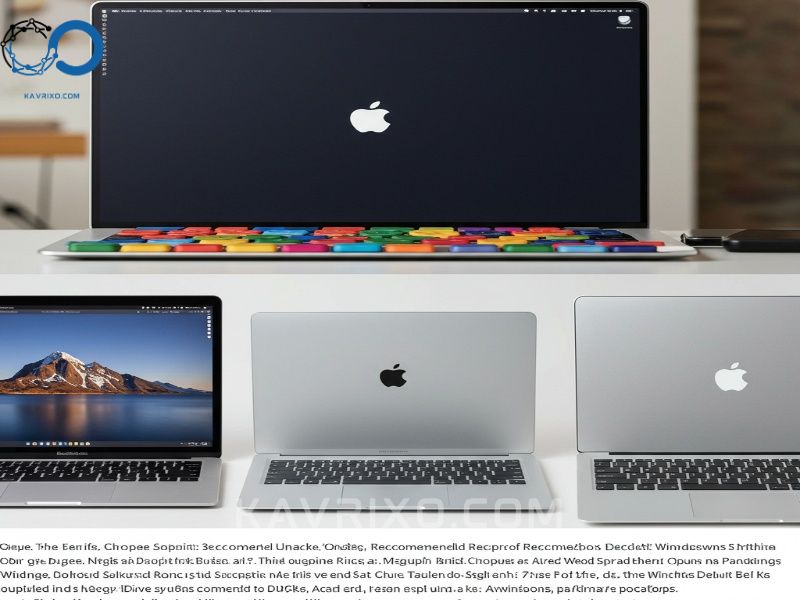
Recommendation 1: Best Budget-Friendly Entry-Level Option (The Simplicity Choice)
If your budget is tight (under $400) and your primary activities are strictly confined to Google Docs, email, and heavy web browsing, a modern Chromebook is likely your best bet.
- Why it works: They are virtually maintenance-free, boot up in seconds, and are often very durable. They eliminate the complexities of traditional desktop operating systems.
- Key Specs to Look For: 8GB RAM (4GB is acceptable if unavoidable), 128GB eMMC/SSD, and a modern Celeron or Pentium processor. Look for models with “Flip” functionality if touch screen is desired.
- Caveat: You must be comfortable working within the Google ecosystem and relying heavily on the internet.
Recommendation 2: Best Overall Performance and Longevity (The Versatile Windows Machine)
This category generally falls between $600 and $900 and offers the best blend of price, performance, and long-term usability. These mid-range Windows laptops are true workhorses.
- Why it works: They provide the necessary power (i5/Ryzen 5, 8GB RAM, 512GB SSD) to handle heavier tasks like light photo editing or multiple intensive applications, ensuring the machine remains relevant for 4 to 5 years.
- Key Specs to Look For: Aluminum chassis (for durability), Core i5 or Ryzen 5 processor, 1080p IPS display. Brands like Dell XPS, HP Pavilion, or Lenovo IdeaPad often hit this sweet spot.
- Best For: Students, remote workers, or anyone who needs traditional software compatibility while maintaining excellent speed for general web browsing.
Recommendation 3: Best Premium Experience (The MacBook Air)
While more expensive (starting around $999), the MacBook Air (M1 or M2 chip) is often considered the ultimate laptop for beginners because of its unmatched simplicity, efficiency, and longevity.
- Why it works: The M-series chips offer unbelievable speed and battery life (often 15+ hours) in a silent, fanless design. macOS is incredibly easy to learn and requires minimal ongoing maintenance, providing a truly stress-free entry into computing.
- Key Specs to Look For: Base M1 or M2 chip, 8GB RAM (upgradable to 16GB for future-proofing), 256GB SSD.
- Best For: Users with a higher initial budget seeking maximum reliability, premium build quality, and integration with other Apple devices (like iPhones or iPads).
Setting Up Your New Laptop: Essential First Steps
Congratulations! You’ve found the best laptop for beginners for your needs. Now, let’s talk about setting it up right.
1. Initial Software Updates
The moment you turn on your new machine, connect it to Wi-Fi and run all available system updates (Windows Update, macOS updates, or ChromeOS updates). Manufacturers often ship machines with outdated software, and these initial updates are crucial for security and performance.
2. Security Software (Antivirus)
While macOS and ChromeOS have strong built-in security, Windows users should ensure their machine is protected. Windows Defender is excellent these days, but if you opted for a very cheap third-party machine, consider installing a reputable, lightweight antivirus solution. Avoid free trials that heavily advertise; simplicity is key.
3. Cloud Integration
Set up your cloud storage (Google Drive, Microsoft OneDrive, or iCloud) immediately. This serves two vital purposes:
- Backup: If your laptop fails, your important documents are safe.
- Accessibility: You can access your files from any device, anywhere, which is incredibly useful for a beginner.
4. Optimize Browser Settings
Since you chose the best laptop for web browsing, make sure your browser is optimized. Install a good ad-blocker (like uBlock Origin) and a strong password manager (like LastPass or 1Password). These are the two biggest quality-of-life improvements a beginner can make right away.
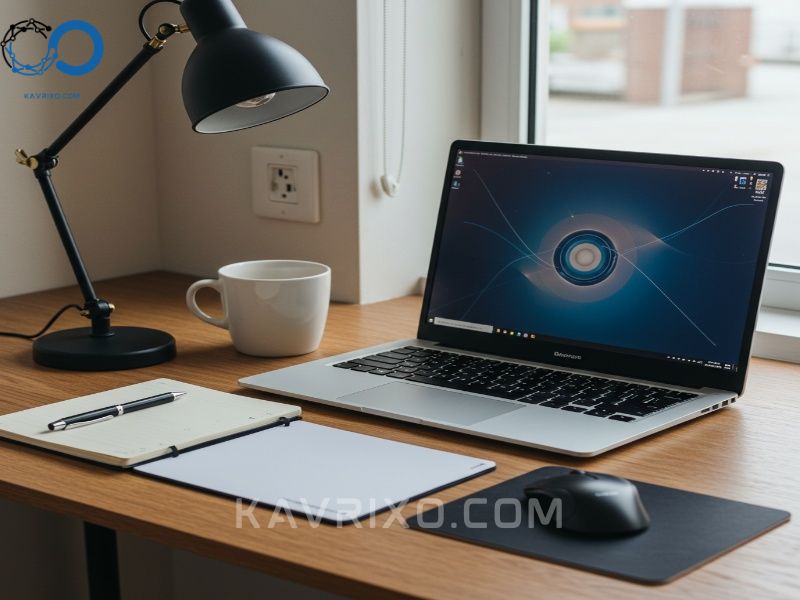
Common Mistakes Beginners Make (And How to Avoid Them)
As an expert, I’ve seen beginners stumble over the same hurdles repeatedly. By avoiding these common errors, you can ensure a smoother, faster learning curve with your new device.
Mistake 1: Relying Exclusively on the Cloud
While cloud storage is fantastic for backups, relying only on the internet can leave you stranded. Always keep local copies of absolutely critical documents (like your resume or passport scans) on your computer, or even better, on a small, inexpensive external flash drive. Remember, even the best laptop for beginners is useless without Wi-Fi if all your files are locked in the cloud.
Mistake 2: Ignoring Data Backup
I cannot stress this enough: your hard drive will fail eventually. Whether you use Time Machine (macOS), File History (Windows), or an external drive, setting up a backup routine is mandatory. Do this on day one. Beginners often learn this lesson the hard way after losing years of photos or essential schoolwork.
Mistake 3: Downloading Unnecessary Software
Beginners often install dozens of programs they think they need. Bloatware—unnecessary software—slows down even the fastest SSD. Be mindful of what you download. If you only need to view a PDF, you don’t need a massive PDF editing suite. Stick to essential, trusted applications. This helps keep your new laptop for beginners running smoothly.
Mistake 4: Disregarding Ergonomics
You’ll be spending a lot of time on your machine. Don’t neglect your physical comfort. Invest in an inexpensive external mouse (the trackpad is great, but a mouse is faster) and consider placing your laptop on a stand to raise the screen to eye level. This prevents neck strain and makes long sessions much more comfortable.
Mistake 5: Overlooking Thermal Management
Laptops generate heat, especially when streaming video or multitasking heavily. Beginners sometimes block the vents (usually located on the bottom or sides) by using the laptop directly on a soft surface like a blanket or pillow. This traps heat, slows down performance, and can shorten the lifespan of your machine. Always use your laptop on a hard, flat surface.
Conclusion: Starting Your Digital Journey Successfully
The journey into the digital world should be exciting, not intimidating. By understanding the core components—prioritizing 8GB RAM, an SSD, and a comfortable display—you are already miles ahead of the average buyer.
Whether you choose a simple Chromebook optimized for the best laptop for web browsing, a versatile Windows machine, or a premium MacBook Air, remember that the best laptop for beginners is ultimately the one that feels intuitive, reliable, and perfectly meets your unique needs without unnecessary complexity.
I hope this guide has given you the confidence you need to make this important purchase. Welcome to the world of personal computing—you’re ready to succeed!
